Wireless Networking Report: Technologies, Radio Systems, Mixers
VerifiedAdded on 2023/06/14
|19
|1586
|423
Report
AI Summary
This report provides an overview of wireless networking technologies, focusing on spread spectrum techniques such as Frequency Hopping Spread Spectrum (FHSS) and Direct Sequence Spread Spectrum (DSSS). It details the components of a radio system, including transmitters and receivers, and explores different types of mixers like analog, digital, and powered mixers. The report also discusses the strengths and weaknesses of various wireless technologies, including Wi-Fi, Bluetooth, WiMAX, and GI-FI, while also covering antenna types. Desklib provides access to this and other solved assignments to aid students in their studies.
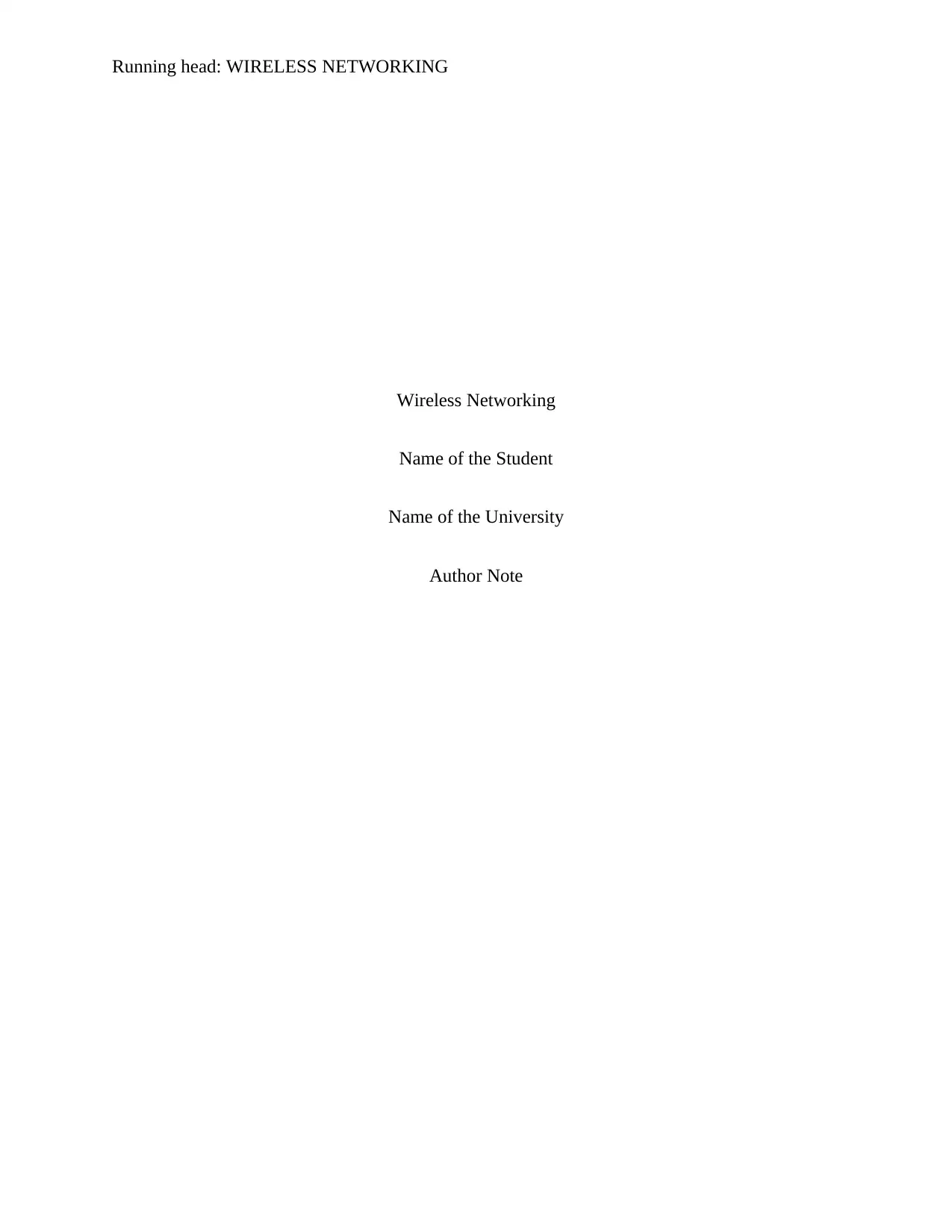
Running head: WIRELESS NETWORKING
Wireless Networking
Name of the Student
Name of the University
Author Note
Wireless Networking
Name of the Student
Name of the University
Author Note
Paraphrase This Document
Need a fresh take? Get an instant paraphrase of this document with our AI Paraphraser
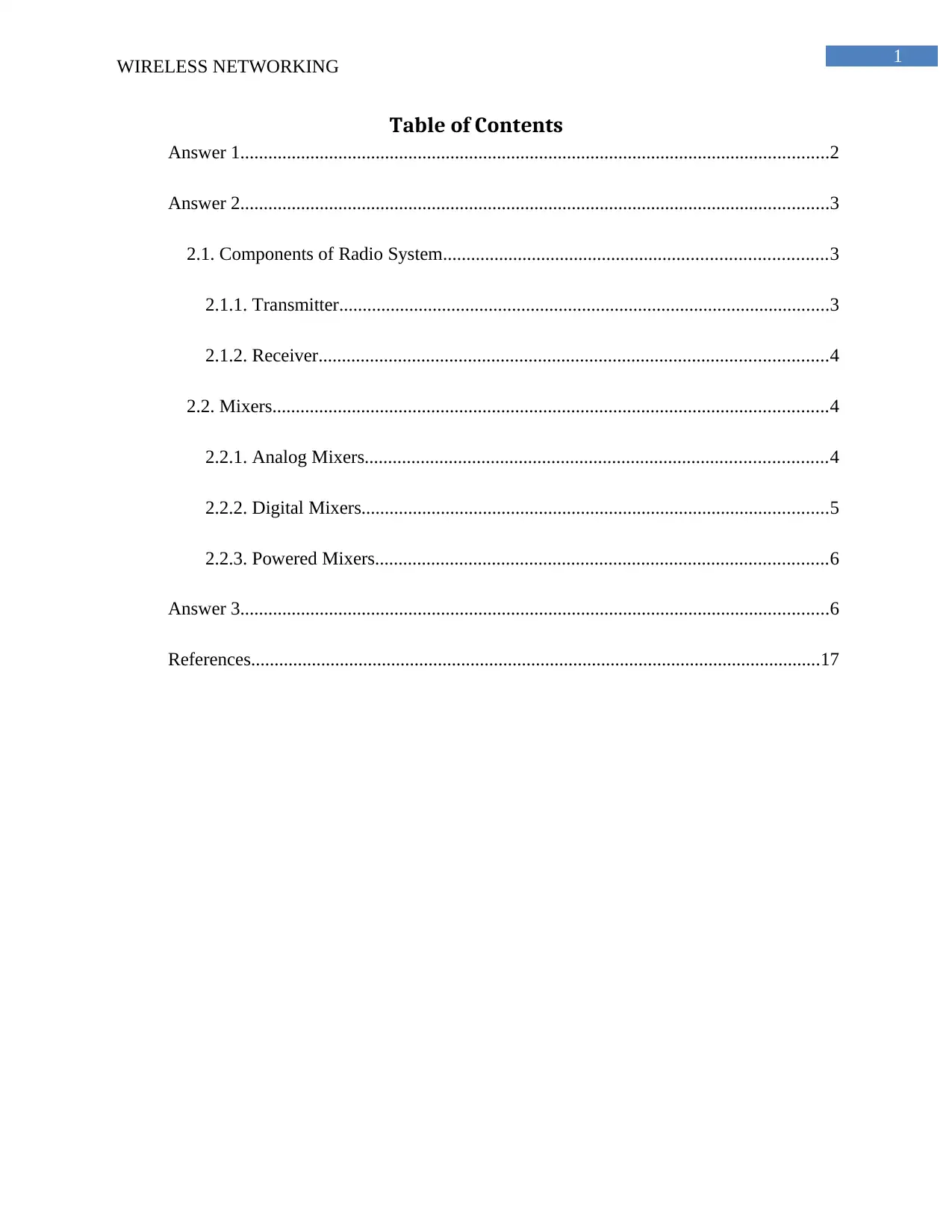
1
WIRELESS NETWORKING
Table of Contents
Answer 1..............................................................................................................................2
Answer 2..............................................................................................................................3
2.1. Components of Radio System..................................................................................3
2.1.1. Transmitter.........................................................................................................3
2.1.2. Receiver.............................................................................................................4
2.2. Mixers.......................................................................................................................4
2.2.1. Analog Mixers...................................................................................................4
2.2.2. Digital Mixers....................................................................................................5
2.2.3. Powered Mixers.................................................................................................6
Answer 3..............................................................................................................................6
References..........................................................................................................................17
WIRELESS NETWORKING
Table of Contents
Answer 1..............................................................................................................................2
Answer 2..............................................................................................................................3
2.1. Components of Radio System..................................................................................3
2.1.1. Transmitter.........................................................................................................3
2.1.2. Receiver.............................................................................................................4
2.2. Mixers.......................................................................................................................4
2.2.1. Analog Mixers...................................................................................................4
2.2.2. Digital Mixers....................................................................................................5
2.2.3. Powered Mixers.................................................................................................6
Answer 3..............................................................................................................................6
References..........................................................................................................................17

2
WIRELESS NETWORKING
Answer 1
The spread spectrum transmission is generally used for transmission of the radio or
telecommunication signals. Spread spectrum is a type of wireless communication where the
transmitted signal is varied deliberately. In this technology, a signal is generally transmitted on a
bandwidth that is larger in size in accordance to the original message or signal. One distinctive
feature of spread spectrum is that the transmitted signal is much higher than the signal that uses
conventional modulation method (Stüber, 2017). Therefore, spread spectrum finds its application
in many different systems such as military system, positioning system, cellular radio and
Wireless LAN. There are various spread spectrum technique such as direct sequence, frequency
hopping and multi carrier. The spread spectrum transmission is mainly used in radio transmission
where the bandwidth occupancy of the signal is considerably higher in comparison (Torrieri,
2015). Out of the three techniques of spread spectrum transmission, two most commonly used
method of comparison are direct sequence spread spectrum and frequency hopping spread
spectrum. The differences between these two techniques are as follows-
Frequency Hopping Spread Spectrum Direct Sequence Spread Spectrum
Frequency Hopping Spread Spectrum or FHSS
makes use of a radio carrier that hops from one
frequency to another in a known pattern
Direct Sequence Spread Spectrum or DSSS makes
use of a carrier that generally remains fixed in a
specific frequency band (Xuan Quyen, Van Yem &
Manh Hoang, 2013).
In FHSS, the frequency is randomized While in DHSS, frequency is generally kept
constant.
Frequency Hopping Spread Spectrum generally has
a limited throughput that ranges up to 2-3 Mbs
Direct Sequence Spread spectrum generally has a
much higher throughput in comparison to
WIRELESS NETWORKING
Answer 1
The spread spectrum transmission is generally used for transmission of the radio or
telecommunication signals. Spread spectrum is a type of wireless communication where the
transmitted signal is varied deliberately. In this technology, a signal is generally transmitted on a
bandwidth that is larger in size in accordance to the original message or signal. One distinctive
feature of spread spectrum is that the transmitted signal is much higher than the signal that uses
conventional modulation method (Stüber, 2017). Therefore, spread spectrum finds its application
in many different systems such as military system, positioning system, cellular radio and
Wireless LAN. There are various spread spectrum technique such as direct sequence, frequency
hopping and multi carrier. The spread spectrum transmission is mainly used in radio transmission
where the bandwidth occupancy of the signal is considerably higher in comparison (Torrieri,
2015). Out of the three techniques of spread spectrum transmission, two most commonly used
method of comparison are direct sequence spread spectrum and frequency hopping spread
spectrum. The differences between these two techniques are as follows-
Frequency Hopping Spread Spectrum Direct Sequence Spread Spectrum
Frequency Hopping Spread Spectrum or FHSS
makes use of a radio carrier that hops from one
frequency to another in a known pattern
Direct Sequence Spread Spectrum or DSSS makes
use of a carrier that generally remains fixed in a
specific frequency band (Xuan Quyen, Van Yem &
Manh Hoang, 2013).
In FHSS, the frequency is randomized While in DHSS, frequency is generally kept
constant.
Frequency Hopping Spread Spectrum generally has
a limited throughput that ranges up to 2-3 Mbs
Direct Sequence Spread spectrum generally has a
much higher throughput in comparison to
⊘ This is a preview!⊘
Do you want full access?
Subscribe today to unlock all pages.

Trusted by 1+ million students worldwide

3
WIRELESS NETWORKING
@2.4 GHZ. Frequency Hopping Spread Spectrum.
FHSS however, is less sensitive to Bluetooth
interface but has certain security issues associated
with it.
Although the bandwidth deficiency decreases,
DSSS is known for its reliability, integrity and
security.
Answer 2
2.1. Components of Radio System
The two main component of a radio system is radio transmitter and a radio receiver.
These two major components are associated with several sub components.
2.1.1. Transmitter
The transmitter is a major component of a radio system. The different sub components of
a transmitter are the power supply, the oscillator, the modulator, the amplifier and the antenna.
Figure 1: Sub Components of a Transmitter
(Source: Pandit & Singh, 2017)
WIRELESS NETWORKING
@2.4 GHZ. Frequency Hopping Spread Spectrum.
FHSS however, is less sensitive to Bluetooth
interface but has certain security issues associated
with it.
Although the bandwidth deficiency decreases,
DSSS is known for its reliability, integrity and
security.
Answer 2
2.1. Components of Radio System
The two main component of a radio system is radio transmitter and a radio receiver.
These two major components are associated with several sub components.
2.1.1. Transmitter
The transmitter is a major component of a radio system. The different sub components of
a transmitter are the power supply, the oscillator, the modulator, the amplifier and the antenna.
Figure 1: Sub Components of a Transmitter
(Source: Pandit & Singh, 2017)
Paraphrase This Document
Need a fresh take? Get an instant paraphrase of this document with our AI Paraphraser
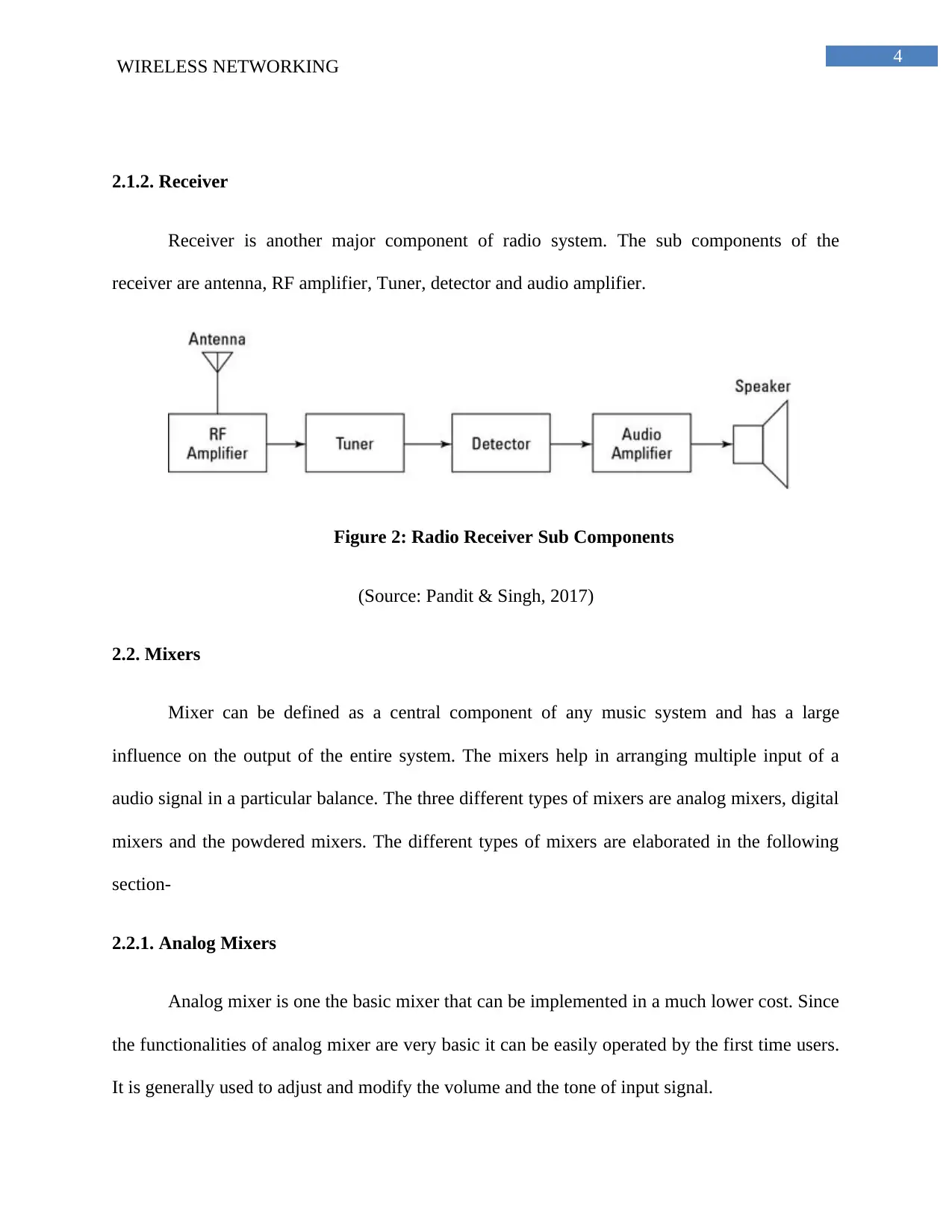
4
WIRELESS NETWORKING
2.1.2. Receiver
Receiver is another major component of radio system. The sub components of the
receiver are antenna, RF amplifier, Tuner, detector and audio amplifier.
Figure 2: Radio Receiver Sub Components
(Source: Pandit & Singh, 2017)
2.2. Mixers
Mixer can be defined as a central component of any music system and has a large
influence on the output of the entire system. The mixers help in arranging multiple input of a
audio signal in a particular balance. The three different types of mixers are analog mixers, digital
mixers and the powdered mixers. The different types of mixers are elaborated in the following
section-
2.2.1. Analog Mixers
Analog mixer is one the basic mixer that can be implemented in a much lower cost. Since
the functionalities of analog mixer are very basic it can be easily operated by the first time users.
It is generally used to adjust and modify the volume and the tone of input signal.
WIRELESS NETWORKING
2.1.2. Receiver
Receiver is another major component of radio system. The sub components of the
receiver are antenna, RF amplifier, Tuner, detector and audio amplifier.
Figure 2: Radio Receiver Sub Components
(Source: Pandit & Singh, 2017)
2.2. Mixers
Mixer can be defined as a central component of any music system and has a large
influence on the output of the entire system. The mixers help in arranging multiple input of a
audio signal in a particular balance. The three different types of mixers are analog mixers, digital
mixers and the powdered mixers. The different types of mixers are elaborated in the following
section-
2.2.1. Analog Mixers
Analog mixer is one the basic mixer that can be implemented in a much lower cost. Since
the functionalities of analog mixer are very basic it can be easily operated by the first time users.
It is generally used to adjust and modify the volume and the tone of input signal.
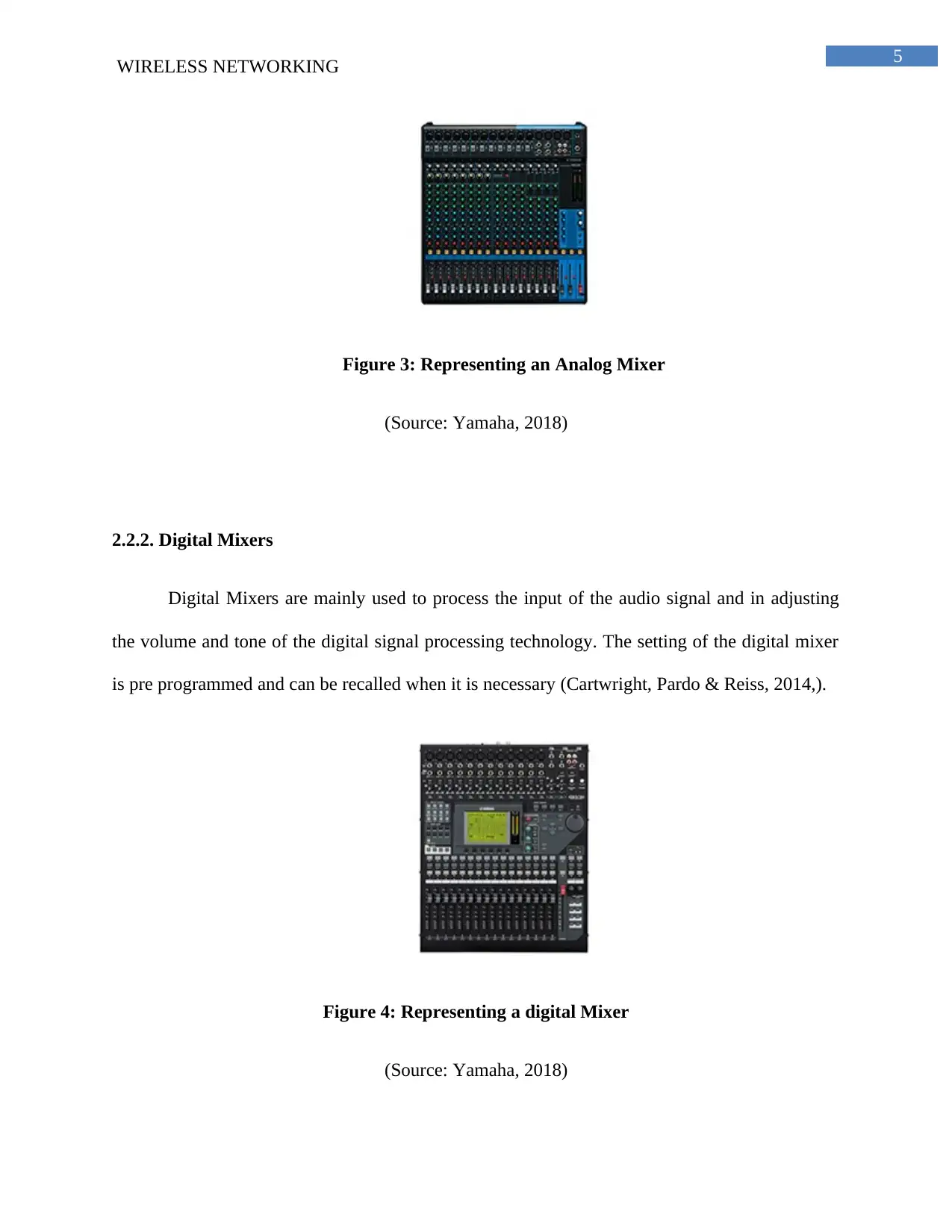
5
WIRELESS NETWORKING
Figure 3: Representing an Analog Mixer
(Source: Yamaha, 2018)
2.2.2. Digital Mixers
Digital Mixers are mainly used to process the input of the audio signal and in adjusting
the volume and tone of the digital signal processing technology. The setting of the digital mixer
is pre programmed and can be recalled when it is necessary (Cartwright, Pardo & Reiss, 2014,).
Figure 4: Representing a digital Mixer
(Source: Yamaha, 2018)
WIRELESS NETWORKING
Figure 3: Representing an Analog Mixer
(Source: Yamaha, 2018)
2.2.2. Digital Mixers
Digital Mixers are mainly used to process the input of the audio signal and in adjusting
the volume and tone of the digital signal processing technology. The setting of the digital mixer
is pre programmed and can be recalled when it is necessary (Cartwright, Pardo & Reiss, 2014,).
Figure 4: Representing a digital Mixer
(Source: Yamaha, 2018)
⊘ This is a preview!⊘
Do you want full access?
Subscribe today to unlock all pages.

Trusted by 1+ million students worldwide
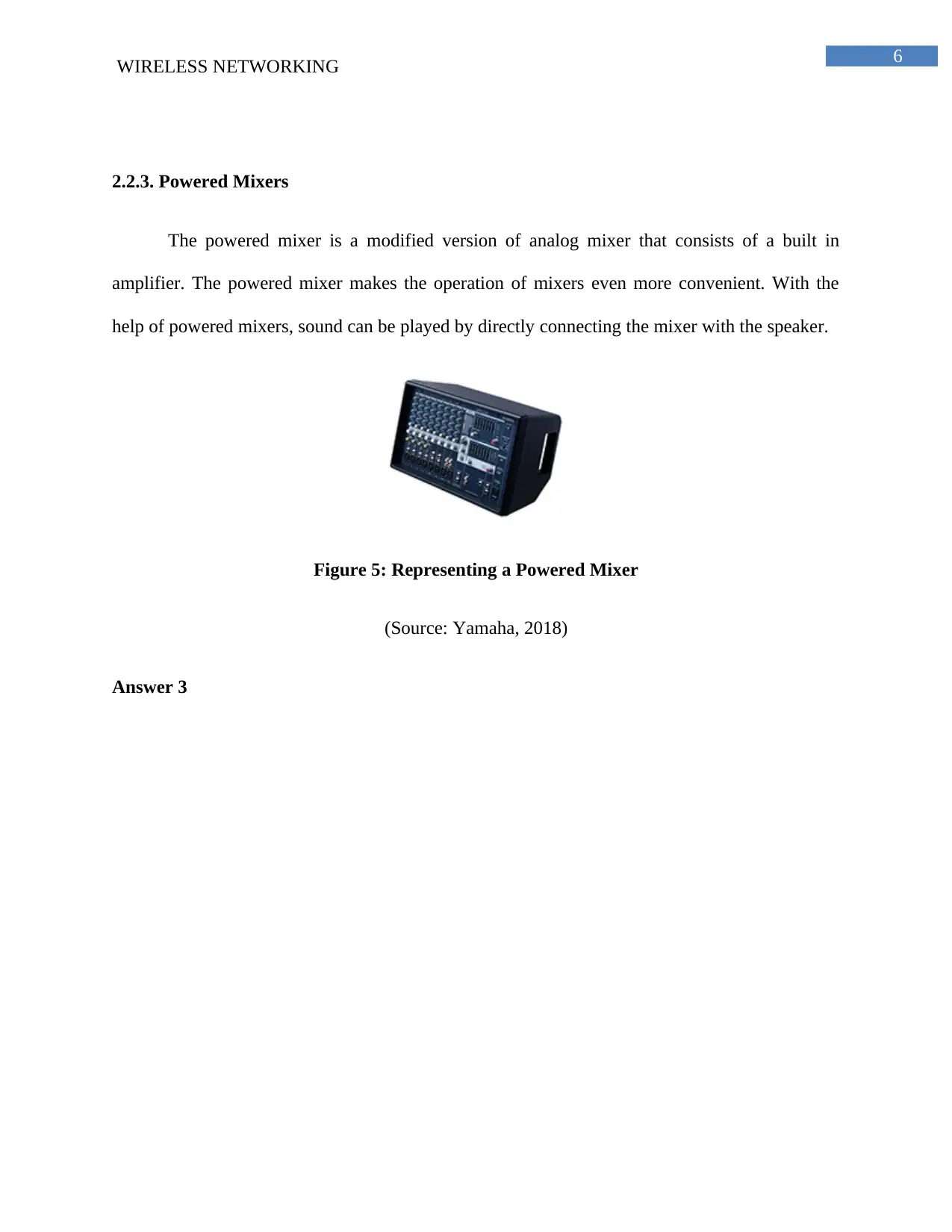
6
WIRELESS NETWORKING
2.2.3. Powered Mixers
The powered mixer is a modified version of analog mixer that consists of a built in
amplifier. The powered mixer makes the operation of mixers even more convenient. With the
help of powered mixers, sound can be played by directly connecting the mixer with the speaker.
Figure 5: Representing a Powered Mixer
(Source: Yamaha, 2018)
Answer 3
WIRELESS NETWORKING
2.2.3. Powered Mixers
The powered mixer is a modified version of analog mixer that consists of a built in
amplifier. The powered mixer makes the operation of mixers even more convenient. With the
help of powered mixers, sound can be played by directly connecting the mixer with the speaker.
Figure 5: Representing a Powered Mixer
(Source: Yamaha, 2018)
Answer 3
Paraphrase This Document
Need a fresh take? Get an instant paraphrase of this document with our AI Paraphraser
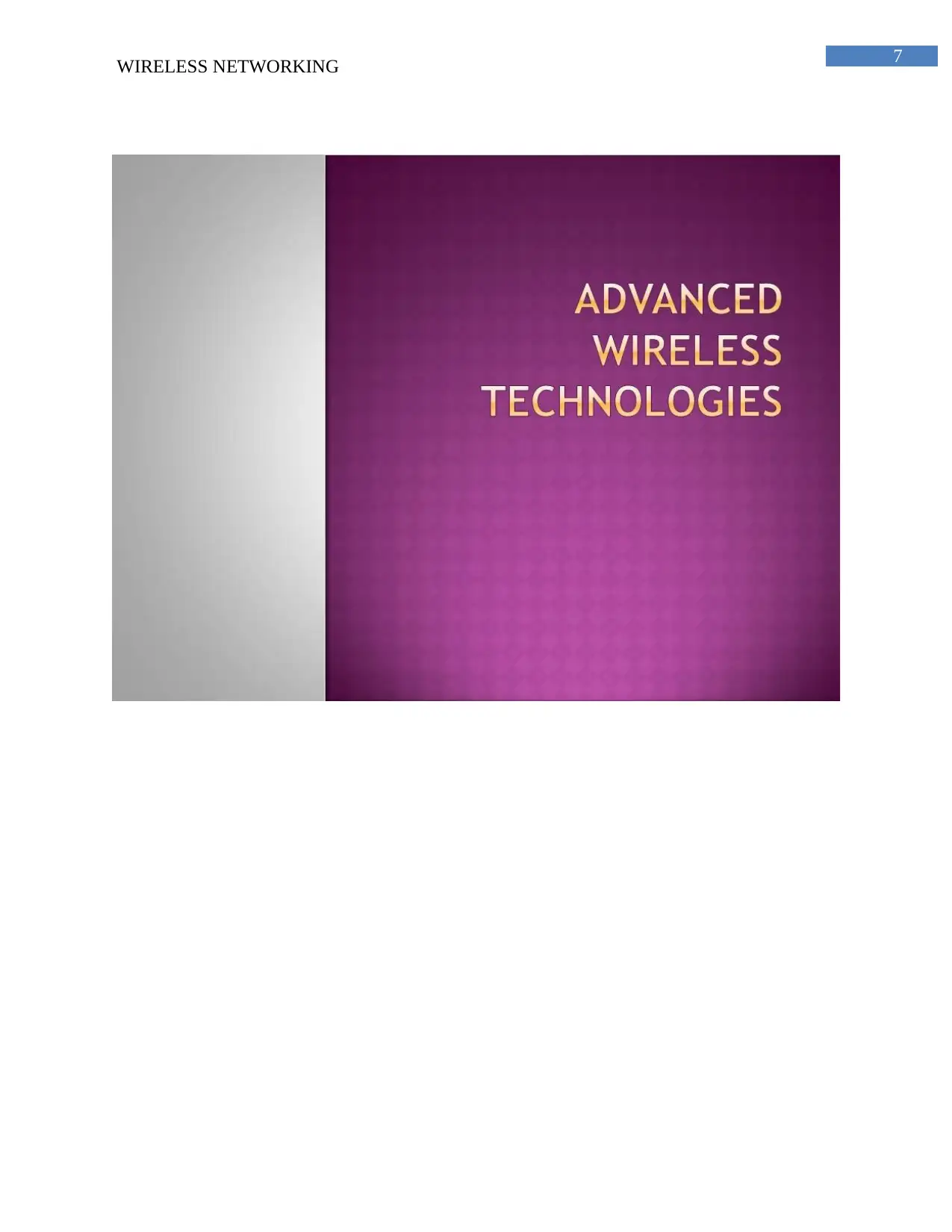
7
WIRELESS NETWORKING
WIRELESS NETWORKING

8
WIRELESS NETWORKING
WIRELESS NETWORKING
⊘ This is a preview!⊘
Do you want full access?
Subscribe today to unlock all pages.

Trusted by 1+ million students worldwide

9
WIRELESS NETWORKING
The major strength of WIFI technology is that, it helps in developing a communication
medium for connecting different electronic devices. However, the major weakness associated
with the WIFI technology is that data can be transferred among the devices, which are in close
proximity.
WIRELESS NETWORKING
The major strength of WIFI technology is that, it helps in developing a communication
medium for connecting different electronic devices. However, the major weakness associated
with the WIFI technology is that data can be transferred among the devices, which are in close
proximity.
Paraphrase This Document
Need a fresh take? Get an instant paraphrase of this document with our AI Paraphraser

10
WIRELESS NETWORKING
The major strength of wireless communication is that it allows users from any parts of the
world to remain connected with each other. However, it is somewhat costly to implement, which
is its major weakness.
WIRELESS NETWORKING
The major strength of wireless communication is that it allows users from any parts of the
world to remain connected with each other. However, it is somewhat costly to implement, which
is its major weakness.
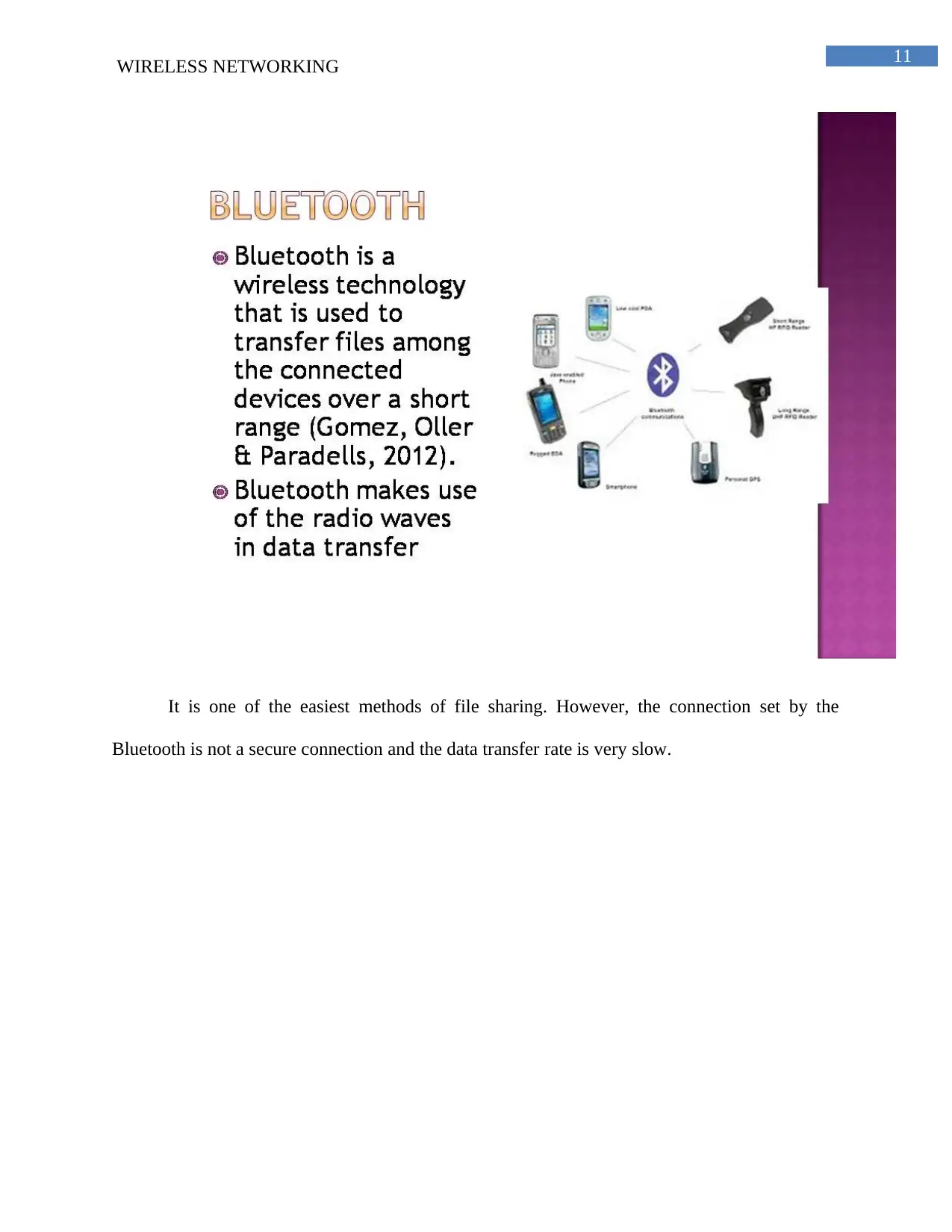
11
WIRELESS NETWORKING
It is one of the easiest methods of file sharing. However, the connection set by the
Bluetooth is not a secure connection and the data transfer rate is very slow.
WIRELESS NETWORKING
It is one of the easiest methods of file sharing. However, the connection set by the
Bluetooth is not a secure connection and the data transfer rate is very slow.
⊘ This is a preview!⊘
Do you want full access?
Subscribe today to unlock all pages.

Trusted by 1+ million students worldwide
1 out of 19
Related Documents
Your All-in-One AI-Powered Toolkit for Academic Success.
+13062052269
info@desklib.com
Available 24*7 on WhatsApp / Email
![[object Object]](/_next/static/media/star-bottom.7253800d.svg)
Unlock your academic potential
Copyright © 2020–2025 A2Z Services. All Rights Reserved. Developed and managed by ZUCOL.



